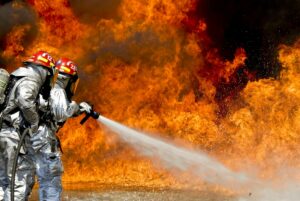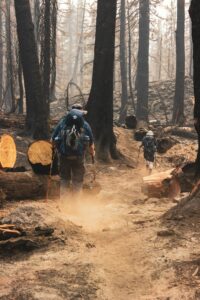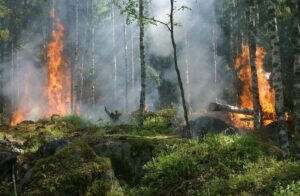Kamala Harris, in Item #7 of her A New Way Forward, asserts that her administration, along with President Biden, has passed several pieces of landmark legislation—ranging from the Bipartisan Infrastructure Law to the CHIPS and Science Act. She claims these programs have created more than 1.6 million manufacturing and construction jobs, launched 60,000 infrastructure projects, and brought private investment into key industries like semiconductors, clean energy, and electric vehicles.
However, from a conservative perspective, these claims require deeper scrutiny. Is this another case of government overreach masquerading as job creation? Or do Harris’s claims overlook the inefficiencies and distortions caused by heavy-handed federal intervention? Let’s explore whether Harris’s vision for innovation and jobs is truly viable—or just inflated rhetoric.
 1. The Questionable Job Creation Claims
1. The Questionable Job Creation Claims
Harris boasts that 1.6 million manufacturing and construction jobs were created during the Biden-Harris administration. At face value, that number sounds impressive—but what’s behind it?
Much of the job growth cited likely reflects a post-pandemic recovery, with workers re-entering the labor market as the economy reopened [1]. It’s important to distinguish between reclaimed jobs and newly created jobs. As millions of Americans returned to work following COVID-19 lockdowns, the Biden-Harris administration took credit for this natural recovery, without acknowledging that many of these workers were simply resuming roles they had prior to the pandemic [2].
From a conservative standpoint, this is misleading. Genuine job creation stems from organic market growth, driven by private investment and innovation, not from government programs. Government-driven job creation, especially when tied to massive spending bills, tends to result in temporary positions that dissolve once the funds dry up [3]. Conservatives argue that a better approach to job growth lies in reducing regulations and lowering taxes, creating an environment where businesses can thrive and real jobs can be created—not jobs dependent on government contracts or subsidies.
Reality Check:
If Harris’s 1.6 million jobs claim includes people merely returning to their jobs, it’s far from the job boom the administration wants to take credit for. True economic growth comes from reducing government interference in the labor market, not expanding it [4].
2. 60,000 Infrastructure Projects—New or Leftover?
Harris proudly cites 60,000 infrastructure projects that the administration has funded. But the reality is that many of these projects could have been carried over from previous administrations, particularly the Obama years. The American Recovery and Reinvestment Act under President Obama promised similar large-scale infrastructure improvements, yet many projects remained unfinished or underfunded by the time he left office [5].
This raises an important question: are these new projects, or are they part of a backlog? If much of the funding Harris touts is repurposed from earlier initiatives, the administration may be inflating its accomplishments. Projects that have been delayed for a decade hardly represent fresh investment in America’s future [6].
Conservatives often argue that federal involvement in infrastructure projects leads to inefficiencies and delays. Big government programs tend to be bogged down by bureaucracy, with long timelines and budget overruns. A conservative solution would focus on empowering state and local governments—or even private industry—to handle these projects. These entities are often better suited to complete infrastructure projects on time and within budget because they face real accountability, unlike federal programs [7].
Reality Check:
If a significant portion of the 60,000 projects are leftovers from previous administrations, Harris’s claim that her administration is driving a new infrastructure renaissance falls flat. Conservatives would prefer a decentralized approach that gives power back to the states and the private sector to manage their infrastructure needs [8].
3. Private Investment—Government-Led or Market-Driven?
Another key claim Harris makes is the $900 billion in private-sector investment supposedly spurred by these legislative efforts. But is this the result of government action, or would it have happened anyway?
A conservative rebuttal here is clear: market forces, not government intervention, are the best drivers of innovation and investment. While tax incentives can temporarily boost certain industries, artificially steering the private sector with government programs distorts the market [9]. This is especially true in the energy sector, where policies that heavily favor green energy have ignored market demand for more reliable, affordable energy sources like natural gas and oil [10].
For example, the subsidies and investments tied to the Inflation Reduction Act have pushed companies into renewable energy sectors, even when demand and profitability might not align with these ventures [11]. Conservatives argue that free-market forces would better allocate resources to industries that consumers genuinely need, rather than those favored by the government’s green energy agenda.
Reality Check:
Private investment works best when it’s market-driven, not manipulated by government programs. Harris’s focus on government-led incentives risks distorting industries, leading to inefficiencies and poor long-term outcomes [12].

Tim Mossholder
4. Unions and Labor Market Distortion
Harris proudly declares that her administration is the “most pro-labor” in history, citing her support for unions as a cornerstone of middle-class prosperity. Yet, from a conservative viewpoint, this pro-union stance creates distortions in the labor market.
The PRO Act—which Harris champions—would eliminate right-to-work laws, forcing workers in certain states to join unions whether they want to or not [13]. Conservatives argue that workers should have the freedom to choose whether they wish to join a union, rather than being coerced into membership. Additionally, union-driven wage increases can lead to higher costs for businesses, resulting in job losses or reduced competitiveness, particularly in manufacturing sectors [14].
A conservative approach favors free-market labor policies that give workers flexibility and businesses the ability to compete globally. While unions may benefit some workers, forcing them into all sectors can stifle economic growth and innovation. Harris’s pro-union stance prioritizes union leadership and bureaucrats over individual worker freedoms and the competitiveness of American industries [15].
Reality Check:
Harris’s support for policies like the PRO Act undermines individual worker freedom and risks raising costs for businesses, making America less competitive on the global stage. Conservatives advocate for worker choice, not union mandates [16].
5. Economic Nationalism or Regulatory Burden?
Harris claims that her administration will not tolerate unfair trade practices from China or other countries that undermine American workers. But while this rhetoric sounds strong, the broader regulatory environment under the Biden-Harris administration may be hurting American businesses more than it helps them.
Many conservatives believe that instead of fostering economic nationalism, the administration’s regulatory policies, especially in areas like energy and environmental protections, have made it harder for American businesses to compete globally [17]. By imposing burdensome regulations on industries like oil and gas, the administration is forcing companies to either relocate production abroad or shut down altogether, resulting in job losses and reduced economic output [18].
Rather than relying on government regulations and trade barriers, conservatives argue that the best way to combat unfair trade practices from China or other competitors is to strengthen the domestic business environment. Lowering taxes, reducing regulatory burdens, and encouraging energy independence will give American companies the tools they need to succeed without heavy-handed government intervention [19].
Reality Check:
Harris’s tough talk on trade might resonate with voters, but the administration’s broader regulatory policies make it harder for American businesses to compete. A conservative solution focuses on empowering businesses through deregulation and energy independence, not more government interference [20].
Conclusion: Harris’s Promises or Government Overreach?
Kamala Harris’s vision for supporting American innovation and workers is packed with ambitious claims of job creation, infrastructure investment, and economic growth. But from a conservative perspective, these promises are more likely to result in government overreach than sustainable prosperity. Whether through inflating job creation numbers, repurposing old infrastructure projects, or distorting market forces with government spending, the Biden-Harris approach leans heavily on the belief that government intervention is the key to success.
In reality, free markets, individual choice, and limited government are the true drivers of innovation and economic growth. Harris’s policies may create temporary gains, but the long-term consequences—inefficiency, higher costs, and reduced competitiveness—are far more concerning. For America to truly thrive, we need policies that empower businesses and workers, not bind them with union mandates and government-driven programs.
References:
- Bureau of Labor Statistics. “Labor Market Recovery Post-COVID.” https://www.bls.gov
- Economic Policy Institute. “Job Growth During Biden-Harris Administration: Fact or Fiction?” https://www.epi.org
- Cato Institute. “How Government Spending Distorts Job Creation.” https://www.cato.org
- National Review. “The Reality Behind Biden’s 1.6 Million Jobs Claim.” https://www.nationalreview.com
- Heritage Foundation. “Obama’s Infrastructure Legacy: What Happened to ARRA?” https://www.heritage.org
- Congressional Budget Office. “Infrastructure Funding and the Obama Administration’s Projects.” https://www.cbo.gov
- Reason Foundation. “Why Federal Infrastructure Projects Fail.” https://www.reason.org
- American Conservative Union. “State and Local Solutions to Infrastructure Development.” https://www.conservative.org
- The Wall Street Journal. “Private Investment and Government Distortion.” https://www.wsj.com
- Competitive Enterprise Institute. “Green Energy Subsidies and Market Distortions.” https://www.cei.org
- The Federalist. “Inflation Reduction Act’s Green Energy Agenda: Boon or Bust?” https://thefederalist.com
- Mercatus Center. “Government-Led Investment vs. Market-Driven Innovation.” https://www.mercatus.org
- The Hill. “How the PRO Act Threatens Worker Freedom.” https://www.thehill.com
- Americans for Prosperity. “Why Right-to-Work Laws Benefit Workers and Businesses.” https://americansforprosperity.org
- National Right to Work Committee. “The Case Against the PRO Act.” https://www.nrtwc.org
- Manhattan Institute. “The Economic Impact of Unions on American Industries.” https://www.manhattan-institute.org
- U.S. Chamber of Commerce. “Regulations and the Competitiveness of American Businesses.” https://www.uschamber.com
- Institute for Energy Research. “The Regulatory Burden on the Oil and Gas Industry.” https://www.instituteforenergyresearch.org
- Hoover Institution. “Deregulation and Economic Growth: A Conservative Perspective.” https://www.hoover.org
- Foundation for Economic Education. “Energy Independence and American Competitiveness.” https://fee.org




 The immediate destruction caused by wildfires is devastating, but the long-term environmental effects, particularly those related to air pollution, are equally concerning. Wildfire smoke is a complex mixture of gases and fine particles released when organic materials like trees, shrubs, and grasses burn. The smoke contains several harmful pollutants that have significant impacts on both human health and the environment.
The immediate destruction caused by wildfires is devastating, but the long-term environmental effects, particularly those related to air pollution, are equally concerning. Wildfire smoke is a complex mixture of gases and fine particles released when organic materials like trees, shrubs, and grasses burn. The smoke contains several harmful pollutants that have significant impacts on both human health and the environment.
